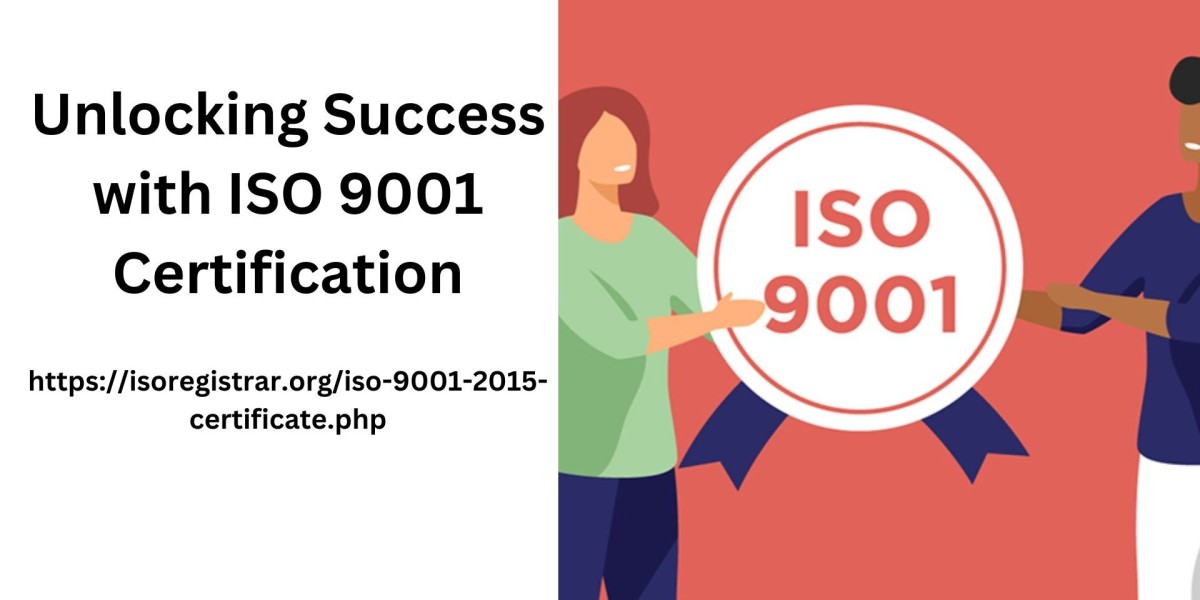In an era where customer expectations are continuously evolving and competition is fierce, organizations must prioritize quality management to stand out and succeed. ISO 9001 certification serves as a key driver for achieving operational excellence and enhancing customer satisfaction. This internationally recognized standard provides a framework for quality management systems (QMS), guiding organizations toward improved processes, better stakeholder relationships, and sustainable growth. This article explores how ISO 9001 certification can unlock success for organizations across various industries.
Understanding ISO 9001
ISO 9001 is part of the ISO 9000 family of standards established by the International Organization for Standardization (ISO). First published in 1987 and updated several times, the latest version—ISO 9001:2015—focuses on a risk-based approach to quality management. This standard applies to any organization, regardless of size or sector, making it a versatile tool for fostering quality.
Key Components of ISO 9001
Customer Focus: The primary aim of ISO 9001 is to meet and exceed customer expectations. Organizations are encouraged to understand customer needs and enhance their satisfaction.
Leadership: Strong leadership is crucial in establishing a quality-driven culture. Leaders must engage employees and provide direction toward quality objectives.
Engagement of People: Involving employees at all levels fosters a sense of ownership and accountability, which is essential for effective quality management.
Process Approach: ISO 9001 promotes managing activities as interconnected processes, enabling organizations to optimize efficiency and effectiveness.
Continuous Improvement: A commitment to ongoing improvement helps organizations adapt to changes and enhance their overall performance.
Evidence-Based Decision Making: Organizations are encouraged to use data and evidence to inform decisions, ensuring that improvements are rooted in factual information.
Relationship Management: Managing relationships with stakeholders, including suppliers and customers, is critical for sustained success.
The Certification Process
Achieving ISO 9001 certification involves a systematic process that includes the following steps:
1. Gap Analysis
Organizations should start with a gap analysis to assess their current quality management practices against ISO 9001 requirements. This initial assessment identifies areas for improvement and establishes a roadmap for achieving compliance.
2. Developing the QMS
Next, organizations must create a documented quality management system tailored to ISO 9001 standards. This includes defining quality policies, objectives, and procedures that guide operations.
3. Training and Awareness
Training employees on the QMS and their specific roles is vital for successful implementation. A well-informed workforce is better equipped to meet quality objectives.
4. Implementation of the QMS
Once the QMS is documented, organizations must implement the defined processes and procedures. This integration into daily operations ensures that quality management becomes a core organizational value.
5. Internal Audits
Regular internal audits are essential for assessing the effectiveness of the QMS. These audits help identify non-conformities and areas for improvement, allowing organizations to take corrective actions promptly.
6. Management Review
Top management should conduct periodic reviews of the QMS to evaluate its performance. These reviews provide an opportunity to analyze audit results, customer feedback, and other performance data.
7. Certification Audit
Finally, organizations can engage an accredited external body to conduct a certification audit. This evaluation assesses compliance with ISO 9001 standards. If successful, the organization will receive ISO 9001 certification.
Benefits of ISO 9001 Certification
Achieving ISO 9001 certification unlocks numerous benefits that contribute to organizational success:
1. Enhanced Customer Satisfaction
By focusing on quality management and meeting customer needs, organizations can significantly enhance customer satisfaction. Satisfied customers are more likely to become repeat buyers and recommend the organization to others.
2. Improved Operational Efficiency
ISO 9001 promotes a process-oriented approach that helps organizations streamline operations, reduce waste, and improve resource utilization. This leads to enhanced productivity and lower operational costs.
3. Competitive Advantage
ISO 9001 certification serves as a powerful differentiator in the marketplace. Organizations that are certified demonstrate a commitment to quality, which can attract customers who prioritize high standards.
4. Risk Management
The standard emphasizes a risk-based approach, enabling organizations to identify and mitigate potential risks. This proactive strategy enhances organizational resilience and prepares businesses to navigate challenges effectively.
5. Stronger Employee Engagement
A quality-oriented culture encourages employee involvement and accountability. When employees understand their role in achieving quality objectives, they are more motivated and productive, leading to higher morale and lower turnover.
6. Continuous Improvement
ISO 9001 fosters a culture of continuous improvement, urging organizations to regularly assess their processes and seek ways to enhance quality. This commitment to improvement drives innovation and adaptability.
7. Access to New Markets
Achieving ISO 9001 certification can open doors to new business opportunities, especially in industries where quality management is a prerequisite for doing business. Many clients and partners prefer or require ISO certification.
8. Increased Stakeholder Trust
ISO 9001 certification enhances credibility and trust among stakeholders, including customers, suppliers, and regulatory bodies. This trust can lead to stronger relationships and improved collaboration
Note: Apply for iso 14001 certification through the portal.
Conclusion
ISO 9001 certification is more than just a compliance measure; it is a strategic asset that unlocks success for organizations. By adopting the principles and processes outlined in the standard, organizations can enhance customer satisfaction, improve operational efficiency, and foster a culture of continuous improvement. The benefits of ISO 9001 certification extend beyond compliance, positioning organizations for long-term growth and competitiveness in today’s dynamic market. Embracing ISO 9001 is a commitment to quality that not only meets customer expectations but also drives sustainable success for years to come. In a world where quality defines success, ISO 9001 certification is your key to unlocking potential.








